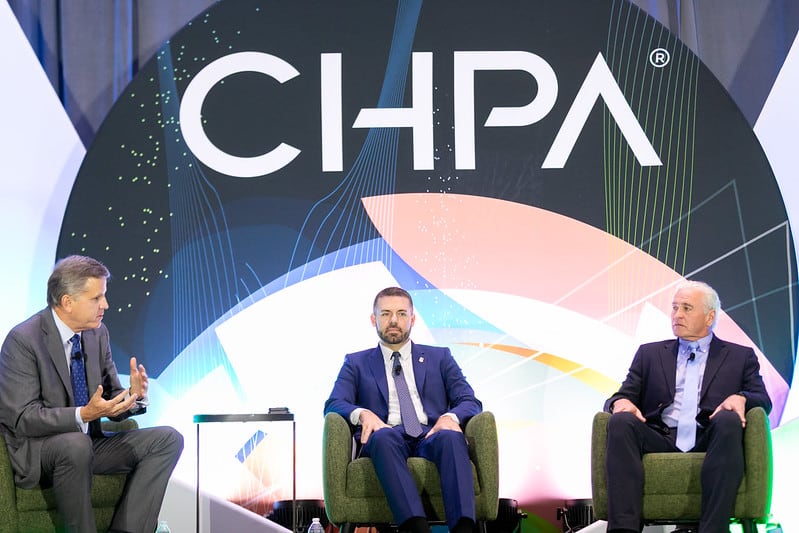At last week’s SoCal Dietary Supplement Consortium, government officials, quality assurance experts and industry stakeholders gathered to discuss the latest regulatory updates to help industy better align with the expectations of the current administration.
Speakers from the U.S. Food and Drug Administration (FDA) made it clear that the agency’s Office of Inspections and Investigations is well aware of the failings in the non-compliant part of industry and has been ramping up training of its inspectors to identify those failings.
“We have a duty—and so thus, having this industry and regulatory meeting together today to have a thoughtful and meaningful discussion to enhance industry compliance and self-regulation while promoting food safety culture, continuous improvement that aligns with what you will see in some of my slides called prevention strategies,” Glenn Bass, acting director of the office of Human Food Inspectorate-East at the FDA, said in his opening keynote speech.
These prevention strategies include combatting foodborne illness, reducing diet-related chronic disease and ensuring that chemicals in food are safe through systematic data collection and signal detection processed through an internal AI model that will trigger unannounced facility inspections. There is also the work being carried out to ensure the safety of products before they come to market.
Feeding Elsa, surveillance and risk prioritization
Messaging from the series of FDA presentations suggested that the MAHA mandate may not quite align with an industry expecting that a golden age of dietary supplements might blossom from a MAGA push for deregulation.
Instead, an initial iteration of FDA’s new generative AI tool known as Elsa was deployed in June to help a reduced staff summarize adverse events for safety assessments, speed up label comparisons and generate code to build nonclinical databases to increase scrutiny of areas like dietary supplement research and food additive approvals. The model is trained only on internal FDA documents and not data from regulated industry.
“Today marks the dawn of the AI era at the FDA with the release of Elsa, AI is no longer a distant promise but a dynamic force enhancing and optimizing the performance and potential of every employee,” Jeremy Walsh, chief AI officer at FDA said following the launch. “As we learn how employees are using the tool, our development team will be able to add capabilities and grow with the needs of employees and the agency.”
Bass noted that it is the Human Food Program’s Office of Surveillance Strategy and Risk Prioritization, with the help of Elsa, that will be driving much of the agency’s inspection work. The office is responsible for assessing the overall state of the food supply and determining risk-informed resource allocation.
“Most people are generally used to us being managed by compliance programs, which will still be done, but a lot of this work will be real-time being driven by our risk pillars,” he said, emphasizing that inspectors will be responding to data points and signals now.
He also highlighted the work of Siobhan Gallagher Taylor and Gary Pecic, the FDA national experts for dietary supplements who have been training inspectors to be more thorough during site visits. Both also presented during the SoCal meeting.
Pecic emphasized the importance of qualifying and monitoring contract laboratories to ensure that they meet FDA requirements. Gallagher Taylor ticked through the quality and safety concerns spotted during gummy manufacturing inspections—from contamination with lab coat fibers, Teflon scrapings and insect legs to processes that fail to deliver finished product specification and shelf stability. Also on the radar: uncontrolled overages that pose potential health hazards and non-uniform mixing that compromises efficacy.
In her presentation, Doriliz DeLeon, FDA senior policy advisor at the Office of Compliance Operations and Implementation, discussed the requirements and opportunities of the agency’s Accredited Third-Party Certification Program.
“This program is intended for the certification of food that’s imported into the US, so FDA does recognize that audits can provide valuable public health assurances when those audits are reliable and aligned with the relevant FDA food safety requirements,” she explained.
Certifications can then be used to voluntarily comply with the supply chain requirements of the Foreign Supplier Verification Program and meet eligibility requirements of the Voluntary Qualified Importer Program to expedite entry into the United States. Accredited certification bodies must also notify FDA of any condition that may cause or contribute to a public health risk—information used to better allocate border and facility inspection resources.
Revisiting how products enter the market
Although the FDA does not have pre-market approval of dietary supplements, MAHA leaders are prioritizing changes that would reform how these products reach consumers. In this context, Gibson restated that the Human Foods Program at FDA is focused heavily on finalizing the next installment the new dietary ingredient notification (NDIN) guidance to respond to industry demand for clarity on qualifying ingredients, required safety data and notification needs.
“They’re going to try to finalize the guidance document, but they are going to focus on making sure they add a little bit more substance to that, especially when it comes to the pre-marketing safety review, so this is going to be a new area that we’re going to spend our time on,” he said.
Also looming is the decision on revising the FDA’s Substances Generally Recognized as Safe (GRAS) Final Rule and elimination of the self-affirmed GRAS pathway. Doing away with self-affirmed GRAS would require companies to publicly notify the FDA of intended use and provide underlying safety data for ingredients looking to enter the food supply.
“For far too long, ingredient manufacturers and sponsors have exploited a loophole that has allowed new ingredients and chemicals, often with unknown safety data, to be introduced into the U.S. food supply without notification to the FDA or the public,” Health and Human Services Secretary Robert F. Kennedy shared in a statement in March. “Eliminating this loophole will provide transparency to consumers, help get our nation’s food supply back on track by ensuring that ingredients being introduced into foods are safe and ultimately Make America Healthy Again.”
Bob Durkin, partner and co-chair of the Regulatory Group at industry law firm Amin Wasserman Gurnani (AWG), discussed the future of GRAS and NDINs during his talk on the current regulatory outlook on color and food additives.
He stressed the importance of specifying the intended use of approved color additives to avoid import detentions and potential violations during FDA facility inspections. For food additives, he reviewed the lengthy and costly petition process and recalled that any substance intentionally added to food is considered a food additive by law, with a few exceptions, which include dietary ingredients.
“Dietary ingredients are excluded from the definition of a food additive […], and this is an interesting issue for the states because a lot of states right now are regulating against dietary supplements based on them being food additives—it’s almost like back to the future,” Durkin said, noting that many states have not updated their statutes and regulations since the enactment of the Dietary Supplement Health and Education Act of 1994, which established the dos and don’ts of dietary supplements.
Articles that are determined to be GRAS by qualified experts are also excluded from the definition of food additive and therefore do not require pre-market notification, at least for the time being.
In July, Senators Edward Markey (D-Mass) and Cory Booker (D-NJ), however, introduced the Ensuring Safe and Toxic-Free Foods Act, a legislative proposal aimed at closing the so-called “GRAS loophole” and increase independent oversight of chemicals added to food. It would require that companies submit GRAS notification to FDA within two years of enactment.
Durkin noted that FDA had an opportunity to provide input on the bill before it was introduced to Congress and urged industry stakeholders participate in the open comment period, particularly since GRAS ingredients may not be grandfathered and the NDIN route could become a congested path to market. There are also pending questions about the bandwidth of the Office of Dietary Supplement Programs for NDIN review and the impact of a “loophole” lost on innovation and investment in preclinical and clinical studies.
Speaking on behalf of industry, Graham Rigby, president and CEO of the American Herbal Products Association (AHPA), and Daniel Fabricant, president and CEO of the Natural Products Association, reviewed some of the other forces coming to bear, including the impact of tariffs and possible exemptions, specifications needed for botanicals, AI’s role in industry, the fast-and-furious state-led protection efforts and the implication of the pending decision on NAC for the coexistence of supplements and drugs.



